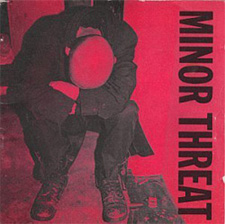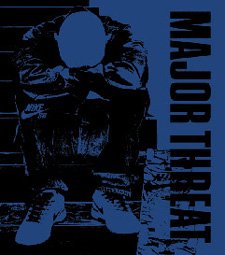There is something amazing about listening to different people with different experiences and different expertise talk about the same thing. It is especially amazing when the topic is as tough as the one of creating relationships between sub-cultures and the corporate world. It all came together at the Sunday afternoon at the Selling Sub-Culture without Selling Out panel.
Publicist and people “connector,” Jeff Newelt, led a panel of smart and savvy sub-culture aficionados who discussed how corporations and those who are leaders in their sub-cultures can work together. Panelists included artist, Molly Crabapple, founder of Urb Magazine, Raymond Roker, indie publisher and Curser founder, Richard Nash, and highly touted blogger Gala Darling.
It is important to define the term sub-culture. According to the panel, a sub-culture is a participatory culture that is intelligent and does not care about the mainstream. It should also be noted that sub-cultures will eventually become the mainstream and cycles of imitation are tighter and more intense than before. According to the panelists, the idea of “selling out” seems to be dying. It’s about making a living, but still keeping the core interests of the sub-culture within the creativity of the artist.
The panel was quick to point out that corporations should follow some rules when wanting to involve sub-cultures with their product.
1. Don’t become a culture vulture! Treat your artists or musicians well. Toyota/Scion was a great example of a corporation working within a sub-culture to promote a product. They helped to launch and sustain music careers of those that participated in the campaign.
2. Hire the original artist or musician; do not rip off someone’s art. Corporations should work off of cultural DNA and not steal ideas. Nike killed their brand for skateboarding shoes by stealing an idea rather than asking to use the album cover. It killed their campaign, because the sub-culture crushed it.
3. Corporations should hire listeners. The listeners should research and understand the sub-culture they are wanting to involve.
4. Creative contests are EVIL! It devalues the artists’ work and it is basically crowd slave labor. Corporations should do portfolio reviews and not ask 100,000 artists to design a logo.
5. Corporations should look to empower people of a sub-culture! There may not be a huge monetary return in providing workshops, educational seminars or even health insurance for a year for skateboarders, but it creates loyalty in a brand. By giving tools to a sub-culture to succeed, it is investing in creators and builders.
The leaders of sub-cultures, the artists, the musicians and the taste makers have responsibilities as well. This is not a one way street.
1. Don’t become a Shilldibeast. Molly Crabapple said that a Shilldibeast is a greedy individual who just takes the corporate dollar no matter what!
2. Do not support a product you do not personally believe in. This is especially important for bloggers. The blogger should stay true to their brand. Once people realize that their favorite blogger is being untruthful, the blogger loses credibility within that sub-culture.
3. Work with a corporation that makes sense for YOU! The relationship should not be about a short-term gain for the sub-culture artist or blogger. By going with a short-term gain, it creates brand erosion. The relationship needs to be a win/win for both artist and corporation.
4. Do not lose sight of the fact that content is a way of connection. It only works by sharing with others and engaging those people. That engagement is what corporations are trying to tap in to.
5. Be a leader in your sub-culture! It is no longer…”if you build it, they will come.” It is now…”if you build something AMAZING, they will come.”
While guidelines for working with corporations were discussed, Richard Nash stated that staying indie is still the way to go. In the changing economic times, Nash believes that the indies can ride it out. For an indie label or publisher, it is not about volume, but it’s about connecting with people. It is time to let go of the industrial way and it is time to connect and create interactions with listeners and readers. It is no longer the world of the shelf; it is the world of the tag.
On a personal note, it was amazing to hear people discussing issues I have been thinking about for the past year. It was certainly fun to watch the panelists discover they were all on the same page.



Permalink
It’s great to see that several indie media and music organizations are still embracing one of their core philosophies of promoting a strong level of positive interaction between artists and audiences. I also like how the panelists established that a decent majority of indie businesses still value the concept of quality over quantity when it comes to the content they promote.
In addition, I find it intriguing to learn about society’s different sub-cultures and the products and services they use as well as how they use them. In the past five years, I have certainly noticed the public’s general shift in attitude in regards to the idea of “selling out”. Changes within the field of mass media in the past decade drastically changed the ways how indie artists and organizations interact with their followings. Now, more individuals seem to recognize how social media is a powerful resource for indie organizations and how it is essential to their overall well-being. I believe many sub-cultures will continue to thrive using this resource for years to come.
Permalink
Good article Josh. I like how you showed both sides, because it IS a two way street.
That being said, I think the sub-culture has more opportunity than ever before to make a buck. Corporations are realizing the importance of connecting with an audience, and nobody does that better than the artist. But, competition is fierce, so the more active an artist is in making that connection, the better off they will be.
Permalink
I think this is a relevant, sensitive issue that I would have really enjoyed being at to hear more. The conflict between the two ideals of “rich, corporate, evil giant” vs. “poor, hard-working artist with integrity” has been around for quite some time and most people see only one side. I like how this panel is working toward navigating a path between the two. It’s particularly relevant with companies, businesses, or websites working to develop their niche audiences and still make a living.